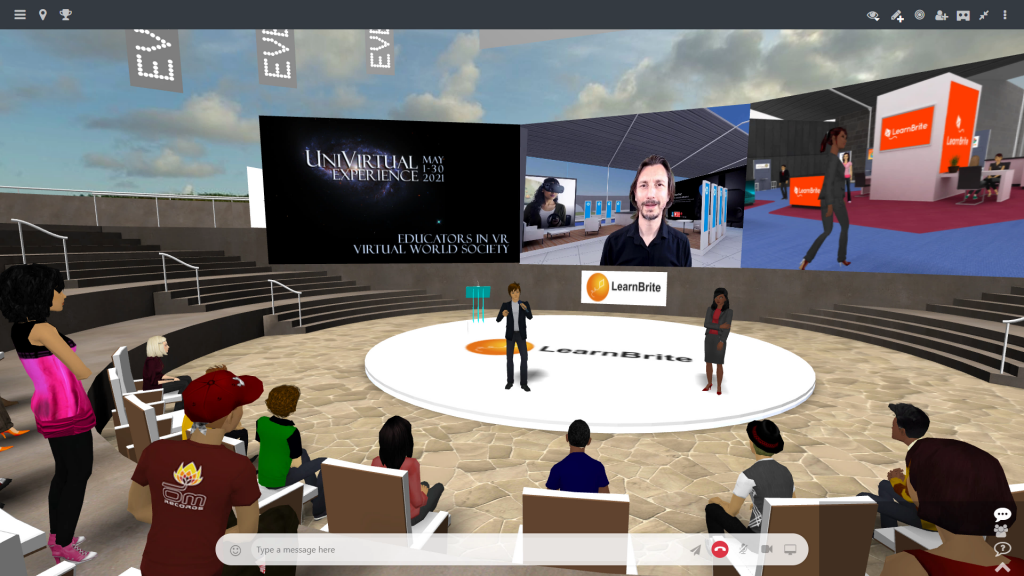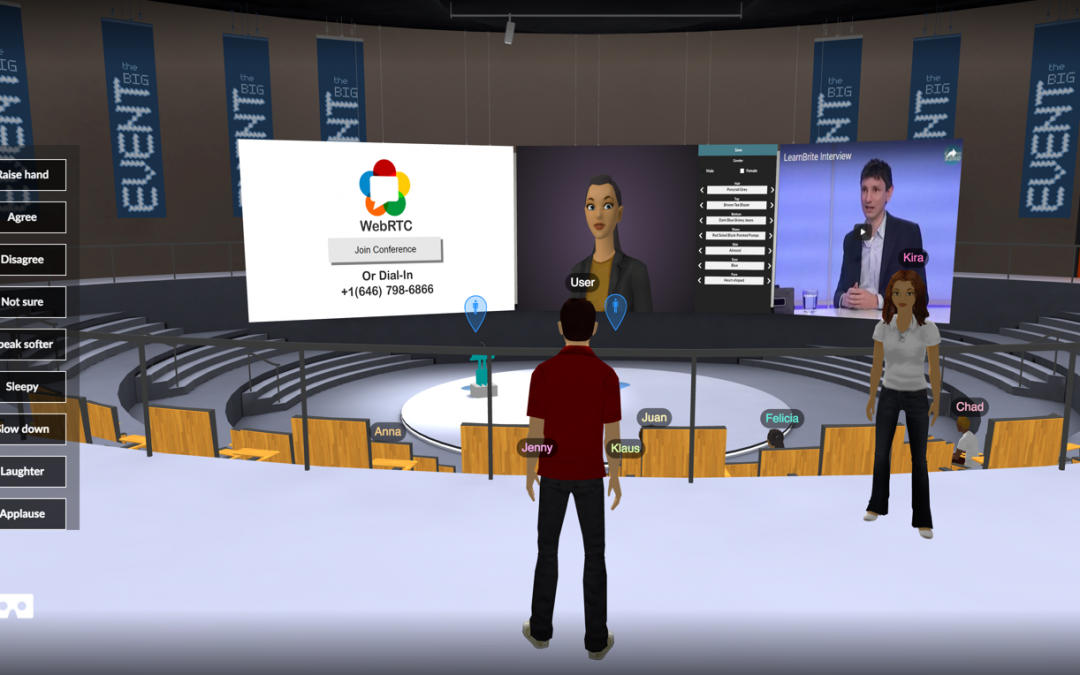Onboarding training for new employees is critical in ensuring the success and longevity of an organization’s workforce. As instructional designers, learning and development professionals, or e-learning agencies, we are responsible for creating effective onboarding experiences that integrate new hires into their roles and foster a sense of belonging within the work environment.
This article will examine the advantages of an effective onboarding system, such as better staff preservation, greater efficiency, improved job contentment and decreased learning curves. We will explore various types of onboarding training programs like self-paced learning modules, instructor-led courses, gamified experiences and more.
Furthermore, we’ll discuss strategies for designing an effective onboarding training program by establishing clear objectives and goals while identifying appropriate content delivery methodologies. You’ll learn how to implement these programs with dedicated teams managing the process, comprehensive plans for a rollout, and monitoring progress. Lastly, we will address methods to measure the success of your onboarding training for new employees through performance metrics analysis, engagement levels monitoring, cost savings assessment from improved retention rates, and quality work output evaluation.
Table of Contents:
- Benefits of Onboarding Training for New Employees
- a. Improved Employee Retention
- b. Increased Productivity
- c. Enhanced Job Satisfaction
- d. Reduced Learning Curve
- Types of Onboarding Training Programs
- Designing an Effective Onboarding Training Program
- Implementing an Onboarding Training Program
- Measuring Success of an Onboarding Training Program
- Frequently Asked Questions Onboarding Training for New Employees
- Conclusion
1. Benefits of Onboarding Training for New Employees
A well-designed onboarding program can provide numerous benefits, including improved employee retention, increased productivity, enhanced job satisfaction, and reduced learning curves. By examining the advantages of an onboarding program, this section will assess how they can lead to greater employee retention, productivity, job satisfaction and shorter learning curves.
a. Improved Employee Retention
A comprehensive onboarding training program helps new hires feel welcome and supported from day one. A sense of inclusion can create greater contentment and dedication to the business, resulting in decreased staff turnover. According to a study by Glassdoor, organizations with strong onboarding processes improve new hire retention by 82% compared to those without such programs (source). By investing in effective onboarding training for new employees, companies can save high costs for hiring replacements.
b. Increased Productivity
Onboarding training for new employees who receive thorough on-the-job instruction is more likely to become productive members of their teams faster than those who do not receive adequate guidance during their initial weeks at work. Properly designed new employee onboarding training programs equip newcomers with essential knowledge about company policies and the tools or techniques required to perform tasks efficiently.
- Faster time-to-proficiency: Well-trained employees reach peak performance sooner than untrained ones.
- Higher quality output: Employees who understand their roles and responsibilities are likelier to produce high-quality work.
- Better teamwork: Onboarding programs emphasizing collaboration can help new hires integrate seamlessly into existing teams, fostering a positive working environment.
c. Enhanced Job Satisfaction
A well-executed onboarding training program sets the stage for a positive employee experience by addressing potential concerns and providing necessary resources early in employment. This proactive approach helps build trust between new hires and their employers and increases job satisfaction and onboarding training for new employees. Satisfied employees are more engaged, resulting in higher productivity rates and better organizational performance (source).
d. Reduced Learning Curve
A successful onboarding training program can expedite new employees’ understanding of company culture, policies, procedures and expectations by supplying them with pertinent information. By delivering this knowledge in a structured manner through various onboarding modules, organizations can reduce the time newcomers can fully acclimate to their roles while minimizing errors or misunderstandings.
Onboarding training for new employees offers a range of benefits that can help to improve employee retention, productivity and job satisfaction while reducing the learning curve. Leveraging immersive 3D experiential learning scenarios through no-code platforms effectively creates engaging onboarding training programs.
Key Takeaway:
A no-code platform is being developed to create 3D experiential learning scenarios for employee onboarding, micro-learning modules and soft skills training. The aim is to provide immersive and engaging experiences that can be self-paced or instructor-led.
2. Types of Onboarding Training Programs
Organizations have various choices regarding onboarding training, such as self-guided learning sessions, instructor-led classes, game-like education experiences, roleplaying scenarios and microlearning parts. Organizations must decide on an onboarding training program based on the specific requirements of their business and new staff members, considering each type’s advantages and drawbacks.
a. Self-Paced Learning Modules
Self-paced learning modules allow employees to complete onboarding training at their own pace without time constraints or pressure from instructors. This approach can be particularly beneficial for adult learners with other responsibilities outside work that demand their attention. Some popular platforms for creating self-paced learning content include LearnUpon, Articulate Rise 360, and Adobe Captivate.
b. Instructor-Led Courses
Instructor-led courses involve live interaction between trainers and new employees in a classroom setting or via video conferencing tools like Zoom. These sessions provide opportunities for real-time feedback, group discussions, hands-on activities, as well as personalized guidance from experienced professionals.
c. Gamified Learning Experiences
- Gamification involves incorporating game-like elements into the employee onboarding process to make it more engaging and enjoyable. It also promotes knowledge retention through reward systems such as points or badges earned by completing tasks successfully.
- Note: The LearnBrite platform is an excellent example of a no-code platform that enables organizations to create immersive 3D experiential learning scenarios, including gamified learning experiences.
d. Roleplay Simulations
Roleplay simulations allow onboarding training for new employees to practice their skills by assuming different organizational roles in realistic situations. This approach can help them develop problem-solving abilities and enhance their understanding of company processes and culture. Some tools for creating roleplay simulations include BranchTrack and LearnBrite.
e. Microlearning Modules
Microlearning modules are short, focused lessons designed to teach specific concepts or skills quickly and efficiently. These bite-sized pieces of content can be easily integrated into an employee’s daily routine without overwhelming them with information overload. Platforms like EdApp, TalentCards, and Note: The LearnBrite platform is also suitable for creating microlearning modules.
Introducing personnel to a business can be achieved through varied onboarding programs, each offering distinct advantages. By carefully designing the program with clear objectives and goals, it is possible to create an effective onboarding experience for new employees using technology to enhance their learning journey.
Key Takeaway:
A no-code platform is being developed to create immersive 3D learning scenarios for employee onboarding, soft skills training, and more. The platform aims to provide self-paced or instructor-led courses that are engaging and gamified, allowing new employees to adapt and learn the ropes of their new job easily.
3. Designing an Effective Onboarding Training Program
Organizations must establish clear objectives and goals to ensure an effective onboarding training program, identify the right content and delivery methodology, develop engaging content and activities, and utilize technology to enhance the experience. Organizations can craft an onboarding program that meets their requirements and supplies a pleasant experience for new employees by taking the necessary steps.

a. Establish Clear Objectives and Goals
Setting clear objectives and goals for your onboarding training process ensures its Success. Start by identifying what you want your new employees to learn during the onboarding phase, such as company culture, policies, job-specific skills or tools they will use daily. This will help you determine which topics should be covered in your LearnBrite-powered modules or instructor-led courses.
b. Identify the Right Content and Delivery Methodology
Different types of content may work better with different delivery methods depending on factors like employee preferences or learning styles. For example, some people might prefer self-paced learning modules while others would benefit more from interactive roleplay simulations or gamified experiences provided by platforms like LearnBrite’s no-code platform.
- Self-Paced Learning Modules: These are ideal for learners who need flexibility in terms of time commitment or pace of learning.
- Instructor-Led Courses: In-person sessions led by experienced trainers can provide valuable guidance through complex topics.
- Gamified Experiences & Roleplay Simulations: Interactive scenarios allow employees to practice real-life situations without risk – perfect for soft skills training or conflict resolution exercises.
c. Develop Engaging Content and Activities
Creating engaging content keeps onboarding training for new employees interested and motivated throughout the onboarding process. By utilizing different forms of media, such as visuals, tests and interactive tasks, it is possible to keep new personnel intrigued and driven during the onboarding process. LearnBrite’s no-code platform allows instructional designers to create immersive 3D experiential learning scenarios without any coding knowledge required.
d. Utilize Technology to Enhance the Experience
Leveraging technology in your onboarding training program can streamline processes and improve the overall user experience for new hires. For example:
- Learning Management Systems (LMS): An LMS enables organizations to manage their entire employee onboarding training from one central location while easily tracking progress and performance metrics.
- No-Code Platforms: Tools like LearnBrite allow users to create custom e-learning experiences without requiring programming expertise – perfect for non-technical professionals who want a more hands-on approach to designing their courses.
- Virtual Reality & Augmented Reality: Immersive technologies offer unique opportunities for creating realistic simulations that mimic real-world environments or situations – ideal for roleplay exercises or technical skill development.
Designing an effective onboarding training program requires careful consideration of objectives, content and delivery methods to ensure a successful implementation. Implementing the plan is equally important as it involves setting up a dedicated team, creating comprehensive plans for rollout and monitoring progress, providing Support during the process and evaluating results accordingly.
Achieve a measurable return on investment (ROI) for your training initiatives with LearnBrite. Studies reveal that heightened engagement through immersive learning reduces churn, fosters innovation, fuels growth, inspires change, and even boosts productivity by up to 12%. With LearnBrite, you can attain these outcomes in record time, unlocking the full potential of your training programs and driving tangible results for your organization.
Key Takeaway:
A no-code platform is being developed to create immersive 3D learning scenarios for various types of training, including onboarding for new employees. This platform will allow the creation of self-paced or instructor-led courses, micro-learning modules, gamified learning experiences and more.
4. Implementing an Onboarding Training Program
To ensure the successful implementation of an onboarding training program, organizations should follow a structured approach that includes setting up a dedicated team to manage the process, creating a comprehensive plan for rollout and monitoring progress, providing Support during the onboarding process, and evaluating results to make adjustments as needed. Organizations can guarantee the achievement of their onboarding program goals by arranging and executing them properly.
a. Set Up a Dedicated Team to Manage the Process
Establishing a dedicated team responsible for managing the onboarding training process is crucial for Success. This team should include instructional designers, learning and development professionals and build rapport, subject matter experts (SMEs), project managers, and other stakeholders who will collaborate closely throughout the project lifecycle. The involvement of these individuals ensures that all aspects of employee onboarding are addressed effectively.
b. Create a Comprehensive Plan for Rollout and Monitoring Progress
A well-defined plan outlining key milestones, timelines, and resources required, along with communication strategies, helps streamline the rollout of your new employee onboarding training program using platforms like LearnBrite. Regularly monitoring progress against this plan allows you to identify potential bottlenecks or challenges early and address them proactively before impacting overall Success.
- Milestones: Identify major tasks or phases within your project timelines, such as content creation or system integration testing.
- Timelines: Establish realistic deadlines based on available resources while considering any dependencies between tasks.
- Resources: Allocate appropriate personnel, budget, and technology to ensure successful execution.
- Communication Strategies: Develop a communication plan that keeps all stakeholders informed of progress updates and changes in project scope or timelines.
c. Provide Support During the Onboarding Process
New employees may require assistance as they navigate through their onboarding training program. Providing Support during this process is essential for ensuring a smooth organizational transition. This can be achieved by offering multiple channels for help, such as email, chatbots, or live Support from team members who are well-versed in the onboarding modules and content. Additionally, incorporating social learning elements like discussion forums or peer mentoring programs can enhance new hires’ experience while fostering collaboration among colleagues.
d . Evaluate Results and Make Adjustments as Needed
An effective onboarding training program should be continuously evaluated to identify improvement areas based on participant feedback and performance metrics. By analyzing data collected throughout the process using tools like surveys or analytics dashboards within your e-learning platform, you can gain valuable insights into how well your program meets its objectives. These findings will enable you to make necessary adjustments to optimize future iterations of your employee onboarding training initiatives.

Successful onboarding training programs require a comprehensive plan and a dedicated team to ensure effective implementation. Measuring such successes success is essential to assess their effectiveness and make necessary adjustments for future iterations.
Key Takeaway:
A no-code platform is being developed to create 3D experiential learning scenarios for various types of training, including onboarding for new employees. This platform aims to provide immersive and engaging learning experiences that can be self-paced or instructor-led, incorporating gamification and roleplay simulations.
5. Measuring the Success of an Onboarding Training Program
To truly understand the effectiveness of your onboarding training program, it is crucial to measure its success using success performance indicators and assessments. Doing so lets you understand your program’s effectiveness and take corrective measures for its improvement.
a. Track Performance Metrics
One way to evaluate the success of your Successding training program is by tracking key performance metrics such as time-to-productivity, employee retention rates, and new hire satisfaction scores. These data points can help determine if your onboarding efforts positively impact employee performance and job satisfaction levels.
The Society for Human Resource Management (SHRM) provides a comprehensive list of potential metrics organizations can use to evaluate their onboarding programs.
b. Monitor Employee Engagement Levels
Engaged employees tend to be more productive, loyal, and satisfied with their jobs than disengaged ones. To gauge engagement levels among new hires during the onboarding process, consider conducting regular surveys or check-ins with them throughout their first few months at work.
For example, the Gallup Q12 Employee Engagement Survey offers a set of 12 questions designed specifically to assess workplace engagement.
c . Analyze Cost Savings from Improved Retention Rates
- Suppose one goal of your organization’s onboarding training program is reducing turnover costs by improving employee retention rates among new hires. In that case, calculating cost savings associated with these improvements can be useful for measuring success to build rapport. To Success, compare the costs of hiring and training new employees against the savings generated by retaining more staff members.
- For example, if your organization has reduced its turnover rate from 20% to 10%, you could calculate cost savings by multiplying the difference in turnover rates (10%) by the average cost per hire.
d . Assess Quality of Work Output
The objective of any onboarding program is to guarantee that recruits possess the aptitudes and data required for their job roles to be fulfilled successfully. Therefore, assessing the quality of work output among newly onboarded employees can provide valuable insights into how well your program prepares them for success.
You maSuccessder using performance evaluations or peer reviews to evaluate work quality during an employee’s initial months at your organization. This will help identify areas where additional support or resources might be needed to improve overall performance.

Building rapport is a crucial aspect of the onboarding experience for new employees. Creating opportunities for new hires to connect with team members and senior leaders can help establish positive relationships and foster a sense of belonging within the organization. Building rapport may include activities such as team-building exercises, mentorship programs, or social events encouraging employee interaction and collaboration. A positive onboarding experience that includes rapport-building activities can help new hires feel welcomed, supported, and engaged in their new workplace, leading to more successful integration and long-term retention.
Key Takeaway:
A no-code platform is being developed to create immersive 3D learning scenarios for employee onboarding, micro-learning modules and soft skills training. The platform aims to provide engaging and interactive, self-paced or instructor-led experiences.
Frequently Asked Questions Onboarding Training for New Employees
What are the 4 Cs of employee onboarding?
The 4 C’s of employee onboarding are Compliance, Clarification, Culture, and Connection. Compliance covers legal and policy-related rules and regulations; Clarification refers to understanding job roles and expectations; Culture involves learning about organizational values, norms, and practices; connection focuses on building relationships with colleagues for a sense of belonging.
What are the 5 Cs of employee onboarding?
The 5 C’s expand upon the original four by adding Confidence as an additional component. This means that along with Compliance, Clarification, Culture, and Connection, employees should also be given opportunities to build self-confidence in their abilities through training programs or mentoring sessions during the onboarding process.
What is onboarding training for new employees?
Onboarding training is a systematic process designed to help new employees integrate into an organization effectively. It includes providing essential information about company policies, culture, and job responsibilities and offering Support in developing the necessary skills for success. The goal is success productivity levels quickly while fostering long-term engagement.

A positive onboarding experience is essential for the successful onboarding process of new employees. Onboarding well-designed and inclusive programs can help new hires feel welcomed and supported, leading to more successful integration into the work environment. Building rapport with team members and senior leaders can facilitate a smooth onboarding process and foster positive relationships within the organization. A positive work environment, where new hires feel supported and valued, can contribute to their engagement and retention in the long term. Creating a successful onboarding process requires thoughtful planning and attention to creating a positive experience for new employees.
How does onboarding help a new employee?
Onboarding helps new employees by giving them clear expectations regarding their roles and responsibilities within the organization. It also introduces them to company culture while connecting them with coworkers who can offer guidance or mentorship. Additionally, effective boarding reduces anxiety associated with starting a new position by ensuring they have access to necessary resources from day one.
Conclusion
By investing in onboarding, businesses can foster a successful start for new staff and ensure they quickly become productive team members. When designing, implementing and measuring these programs, organizations should focus on providing positive onboarding training for new employees experience to help build trust and build rapport between managers and employees while also helping them acquire necessary skills more efficiently.
Elevate your Metaverse to be “futureproof” with LearnBrite – a browser-based platform that allows access from smartphones, tablets, laptops, and VR/AR headsets without downloading or software installation, ensuring seamless access across devices.
Transform your employee onboarding process with LearnBrite‘s immersive 3D experiential learning scenarios. Our platform allows you to create self-paced or instructor-led courses, micro-learning modules, gamified learning, and more designed to engage and empower new employees.


Recent Comments